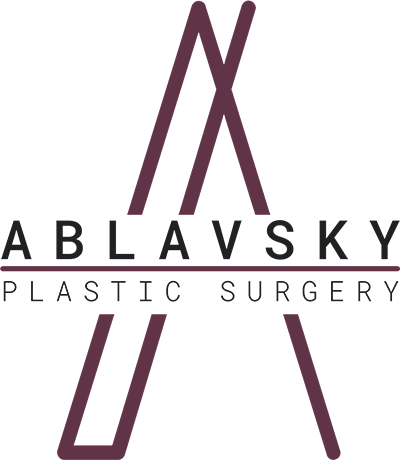Visible male breast fullness or gynecomastia can occur during childhood, adolescence, and even into adulthood. It can often lead to emotional and psychosocial distress. At my San Antonio plastic surgery practice, I offer male breast reduction, or gynecomastia surgery, to address enlarged male breasts to help men feel more confident in and out of their clothes.
If you are interested in learning if you are a good candidate for male breast reduction surgery, request a consultation or call (210) 942-6672 to make an appointment.
Causes of Gynecomastia
Male breast growth can be caused by a number of factors. For many men, gynecomastia develops from various endocrine disorders, genetic disorders, medications, and other conditions. An imbalance of hormones, estrogen and testosterone, can lead to abnormal growth of fibrous breast tissue.
For other men, excess fat in the chest region can cause breast enlargement, also known as pseudogynecomastia. It is not a true growth of fibrous breast tissue but rather excess fat in the chest.
Treating each of these conditions requires different approaches to reducing and reshaping the male breast to give a more masculine appearance.
Male Breast Reduction Options
Men who have a concern with the appearance of their chest present in a variety of ways. Some patients are bothered by excess skin, others have a fullness to their chest particularly behind the nipple areola region, while others have a combination of skin excess and fullness of the chest.
Excess skin after weight loss: Patients who are mostly bothered by excess skin, such as after significant weight loss, likely require skin and breast tissue excision with a free nipple graft.
Gynecomastia: Patients who primarily have a fullness of the nipple areolar region may have what is known as gynecomastia (male breast enlargement). Upwards of 30-60% of adolescent males may develop gynecomastia. The majority of adolescent gynecomastia cases tend to resolve naturally, but it can return in adulthood.
When Should I See an Endocrinologist for My Male Breasts?
An assessment by an endocrinologist should be considered when an underlying hormonal abnormality is suspected. Findings that suggest a hormonal abnormality include:
- Galactorrhea (milk-like nipple discharge)
- An abnormal testicular exam
- Abnormal vision
- Rapid growth of gynecomastia
Some studies suggest all patients who have not yet undergone puberty who have gynecomastia should be assessed by an endocrinologist before considering surgery to correct the breast growth.
If you are experiencing breast fullness or the mass is not behind the areola, or if the nipple has bloody discharges, then I recommend having a mammogram to check for breast cancer.
Who Is a Good Candidate for Male Breast Reduction Surgery?
Gynecomastia can often resolve naturally over time. In these cases, monitoring and reassurance is appropriate for early management.
If you have undergone a full assessment from your primary physician and hormonal and other physical causes have been ruled out, your physician may recommend a prescription drug regimen to reduce the appearance of your breasts.
Once you have determined that there is not a hormonal cause for your breast development and prescription drugs are not effective at reducing the size of your breasts, then I recommend considering surgery to correct enlarged male breasts.
Are Male Breast Reduction Scars Visible?
There is no one single technique used for male breast reduction. Depending on patient concerns, amount of excess skin and tissue, and patient age, I will design a custom treatment for each patient. During your consultation, I will perform a full assessment of your skin and breast tissue to determine the best approach to help you achieve your aesthetic goals while minimizing the appearance of scars.
If your primary concern is excess skin, then the incision and resulting scar typically follows the outline of the pectoralis muscle. This scar extends from the inframammary fold (lower aspect of breast) to the outer contour of the chest muscle. If you have sagging, excess skin, I will also make a circular incision along the nipple areola to reposition the nipple and remove the excess skin. These scars are hidden in the darker pigment of the areola and fade over time.
For gynecomastia patients with minimal or no skin excess concerns, I usually make the incision along the edge of the areola to remove the excess tissue and to camouflage the scar.
For patients with excess fat and tissue, I sometimes combine liposuction with tissue excision to reshape the chest to achieve a more masculine appearance.
What Are Some of the Risks of Gynecomastia Surgery?
Male breast reduction surgery is considered a very safe procedure, but like any surgery, there are potential risks. Early complications of gynecomastia surgery can include infection at the incision site, wound healing issues, fluid collection, such as seromas and bruising or hematomas.
Late complications can include residual fullness, persistent skin excess, contour abnormalities (saucer-deformity), hypertrophied scar, nipple pigment changes, and nipple sensory changes (numbness or hypersensitivity). During your consultation, I will discuss the risks and potential complications associated with male breast reduction surgery to help address your concerns and answer your questions.
Recovery from Male Breast Reduction Surgery
Immediately after surgery, I recommend returning to light activities such as walking, but no strenuous exercise or physical activity for 2-3 weeks. I recommend waiting 1-2 weeks after surgery to return to work, depending on your discomfort level.
After surgery, your incisions will be dressed, and I will prescribe a compressive garment under your clothing to help minimize swelling and provide support. This can improve the outcome by allowing skin tightening.
I also recommend performing hand massages or using a massage roller for 4-6 weeks after male breast reduction surgery to help soften the scar tissue as it develops, reduce swelling, and facilitate a natural contour in the treatment area.
Approximately 4-5 weeks after surgery, your incisions should be healed enough to resume chest exercises using weights or gym machines.
Take the Next Step
If you are ready to learn if gynecomastia surgery is right for you, please request a consultation or call (210) 942-6672 to schedule an appointment.


Leave a Reply